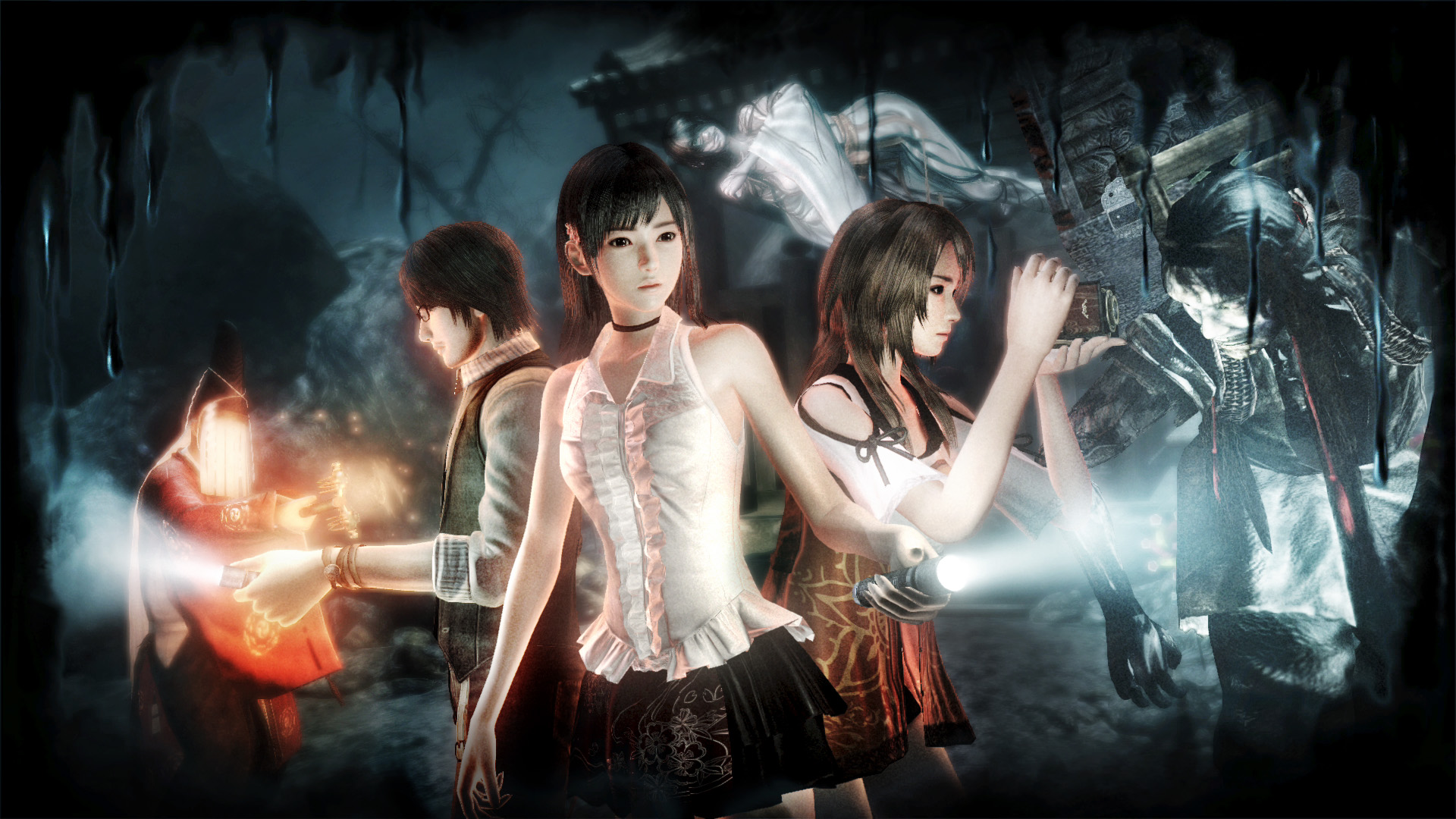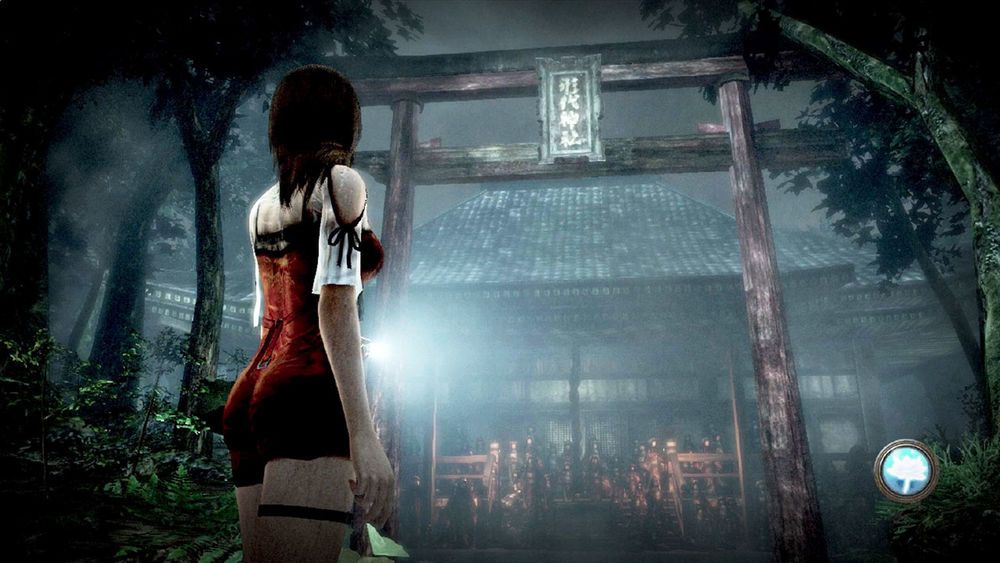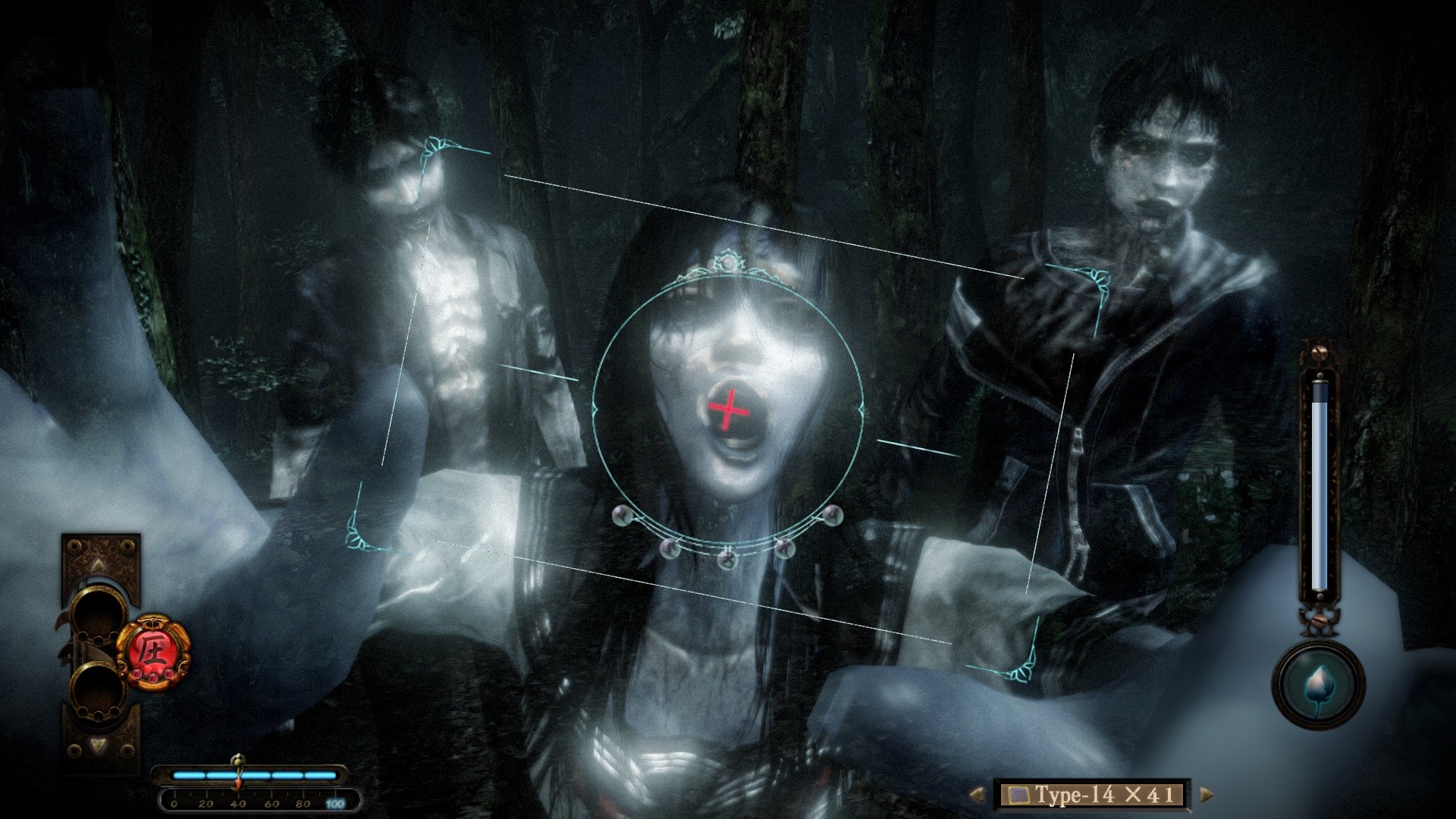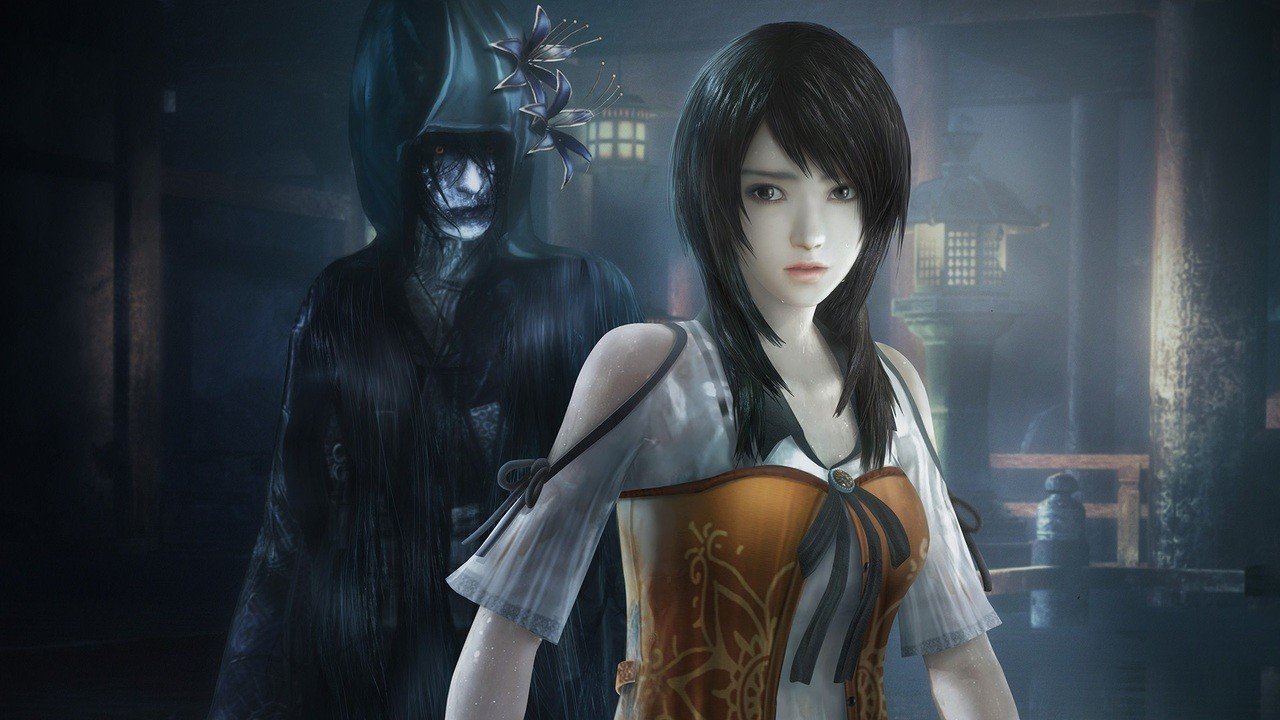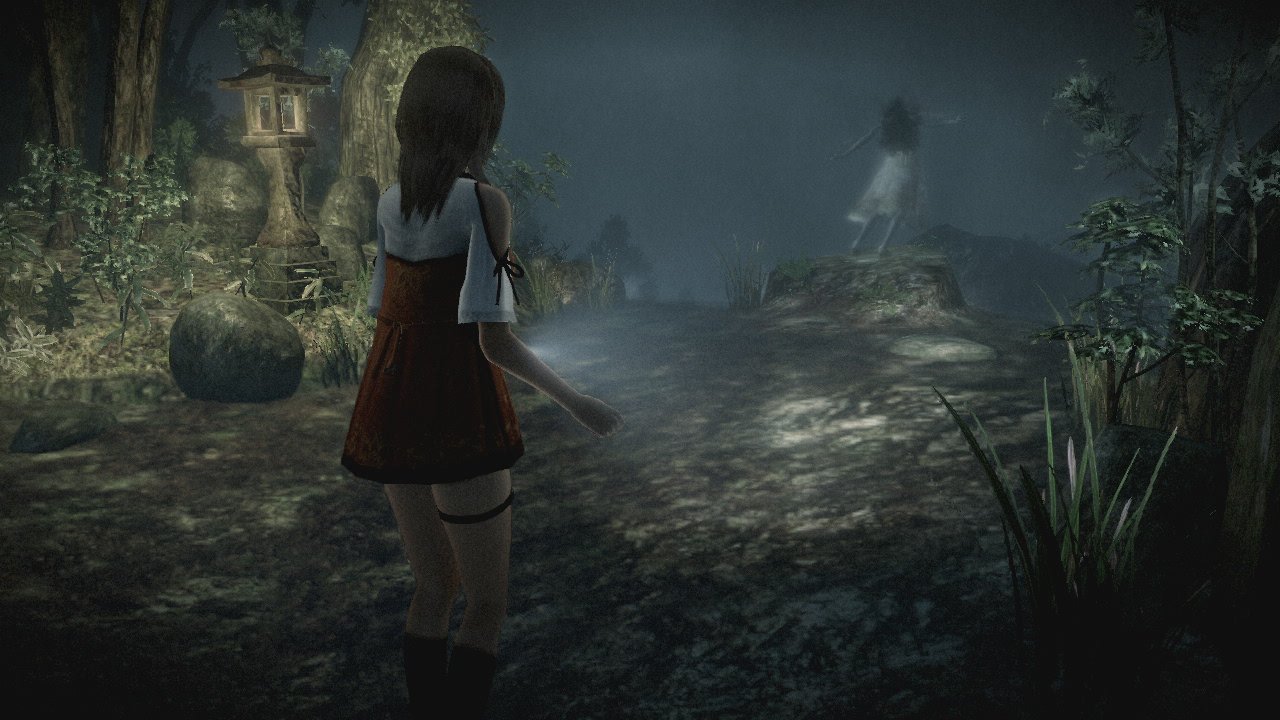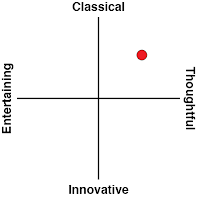Project Zero is the most Japanese of horror properties. Capcom’s Resident Evil series is developed by Japanese artists and is great fun but closely intertwined with western B-grade horror traditions. Konami’s Silent Hill is (for the most part) intelligent and artful, but it was heavily inspired by western psychological horror and later titles were developed outside of Japan. Project Zero, meanwhile, is steadfastly Japanese. Developed by Japanese people, using Japanese horror traditions ranging from the haunted house to yurei storytelling, and featuring characters and locations that are identifiably Japanese. Obviously, I love this series.
Related reading: Our interview with the series director of the Project Zero series.
Project Zero: Maiden of Black Water never got a fair shake on its original release. It was published by Nintendo, and very much thrown out there to die in one of the laziest efforts I’ve ever seen from the company. What’s more, it was released on the Wii U, and that was a certifiable bomb of a console. Now Koei Tecmo has apparently got the rights back to it and has gone with a multi-console release, and while it hasn’t been changed much from that Wii U release, given that almost no one played it previously this is going to be a fresh new horror game for most people. I hope a lot of people do discover it because, as a true cultural artefact that represents a lot of Japan, there’s a lot of learning to go with the stylish, entertaining horror.
Take Maiden of Black Water’s location, for example; it’s fictional, but it’s a very close parallel to Aokigahara, popularly, and rightfully (sadly) known as the “suicide forest.” Once you get past the morbid fascination (and the nasty sense of humour from certain Internet influencers) that the west has with the forest for that reason, it’s actually a really beautiful location. The way that the heavy, thick forest air combines with a general quiet and a thick mossy ground to create an aesthetic that is as beautiful as it is intense. My trip there a few years ago remains one of the most memorable days I’ve spent in Japan, and I’m itching to go back. It was, in fact, Maiden of Black Water that piqued my curiosity about the location.
Maiden of Black Water captures the atmosphere of the forest perfectly in its location design. When you’re not being attacked by ghosts or drenched in water (which is a deadly problem in this game, and we’ll come to that), you can shine your character’s touch around to admire the beauty of the location. Despite the danger afoot, there is also a melancholic serenity that permeates the world of Maiden of Black Water, and that contrast is almost unique to the horror genre, given that most efforts in the genre aim to set you on edge, if not actively sicken you.
That aesthetic philosophy of haunting beauty flows onto the characters, too, and this comes directly from the yurei tradition. In Japanese horror, the yurei will kill you dead just as western ghosts are happy to, but that doesn’t mean they need to be necessarily ugly about it. They can be both beautiful and tragic, rather than ugly and monstrous. To give you an example of the storytelling tradition that highlights this – one of the “three great yurei” is Otsuyu, a beautiful woman who passes away without her lover’s knowledge. However, she comes back as a yurei, appearing just as she did in life, and rekindles her relationship with the man. This goes swimmingly for both until a servant happens to see Otsuyu in her true form (a rotting skeleton), and they subsequently ward the house from the yurei. She still shows up every night, however, and wails to be let in. Unfortunately, one servant didn’t realise what’s going on and lets her in one night. The next morning the corpse of the man is discovered entwined with Otsuyu’s skeleton.
See? Yurei are deadly, but they’re also often beautiful, romantic, tragic and overwhelmingly melancholic. As opposed to giving players ugly monsters to gun down, Project Zero taps into that, presenting sad stories and tragic figures that might present an existential threat, but you’re meant to also sympathise with them. Meanwhile, the (living) heroes of Maiden of Black Water all have an ethereal “deadness” to them. Some might dismiss it as a “mannequin” look, but I would argue that it’s a deliberate aesthetic effort to create an otherworldly beauty that more closely relates the living characters to the dead.
Next, we come to the “weapon” of Maiden of Black Water: The camera. Unlike other horror games where you’re running around armed to the teeth with guns (or totally unarmed and forced to run and hide from everything), in Maiden of Black Water you’ve got a camera, and this works on a couple of thematic levels. Firstly, way back when the Japanese culture was one that believed that photos would steal a person’s soul (which I know is hard to believe in contemporary times, given that Japan is the #1 nation for photography worldwide). So, the use of the camera in this game to very literally blast away the souls of the ghosts is entirely fitting with that traditional part of the Japanese psyche.
Secondly, the camera as a mechanic enhances the fear of the game by forcing you to bring the horror to yourself. The camera only works at short range and is often at its most effective when the spirit is really close. Often you’ll be finding yourself waiting for this thing to inch closer and closer to you before blasting off a shot, and that is effective horror. It too represents something about the Japanese culture, because they do, in fact, like to actively seek out horror experiences. Haunted houses are an enduring tradition during Japanese summers (the idea being that the spooks help chill some of the blistering heat and humidity away), and Maiden of Black Water is in many ways structured as a haunted house experience. You’ll see an item on the ground and lean in to pick it up, and sometimes ghostly hands will appear to grab at you. Your character moves slowly, opens doors at a glacial pace, and is largely confined to pathways and corridors (which is how you progress through a haunted house), and, finally, everything is just so wet (hello Japanese summer).
The Japanese do have an odd association between their ghosts and wetness. Another popular yurei story involves a girl that gets flags down taxi rides and then, at her destination, just disappears, leaving a puddle of water on the seat (without even paying, how rude). Stories like that make it hard to shake the feeling that that association comes from the fact that the Japanese ghost season coincides with the time where you cannot step foot outside without being drenched in sweat. In Maiden of Black Water, water is perhaps the greatest enemy of all, and the more soaked your character is the more dangerous the ghosts are to them. As such, you will very quickly learn to fear bodies of water when you spot them. It’s also a nice, subtle bit of subversion, since water is generally associated with tranquillity and here that is really not the case. As with any good horror game, Koei Tecmo has found a way to put players on edge by undermining the natural order in some way. While again, and in a very subtle way this time, tapping into a very distinctive feature of Japanese horror storytelling tradition.
It’s also worth noting here that Maiden of Black Water brings back the swimwear costumes that the Wii U version purged (for the western release). People will roll their eyes at this, but those swimwear costumes are actually quite appropriate to this particular game, and I actually think the developers would have been well served to write them in as the default costume in some way. The interaction of bodies and water, and the wet sheen off the clothing and skin, is all aesthetically appropriate to a game that works hard to turn something unavoidable (if you haven’t got an umbrella and wetsuit, rain and pools of water will soak you) into something laden with danger. Of course, this point is a little underdone by the fact that the male character doesn’t have a swimsuit of his own but, still, I maintain that these costumes were an unfortunate omission from the Wii U original that I’m glad to see them returned.
After that mini-essay above, I should probably talk about how the game plays a little. Maiden of Black Water is traditional survival horror. Where Resident Evil has forged ahead and morphed into an action blockbuster property, and western horror games have sped up in kind, Maiden of Black Water feels glacial. But it has a deliberate, taut pacing and it builds the atmosphere incredibly well. Puzzles are kept relatively simple, but they do follow the tradition for the genre, and the camera-based combat system is hugely engaging. Common ghosts are straightforward enough, but when you’re battling shrine maiden ghosts that are attacking you via ghostly dances, hanging man ghosts that disappear before diving at you from above, and children ghosts that dash around as playful as they are deadly, lining up the necessary good shot to exorcise them effectively takes an entirely different skillset from the standard horror shooter.
About the only thing I didn’t like about the game is the way it reused locations, and then weaponised that slow movement speed to pad out the game via backtracking. Maiden of Black Water was clearly developed on a shoestring budget, and while Koei invested the money in the right areas (making it all look stunningly beautiful, and getting the camera combat down perfect), there aren’t that many locations to visit, and quite often you’re going to be trudging over places that you’ve already visited. This is particularly a problem because it adds a layer of predictability to proceedings, since you just know when you’re about to crash into a horde of spirits. There is some effort to mask this by presenting the game in a strictly episodic fashion – the idea being to put the controller down and take a break between sessions – but nonetheless Mt. Hikami, evocative as it is, is a touch too small for its own good.
I should also mention that Maiden of Black Water really does a poor job of letting people know that this game is full of genuinely distressing imagery. It’s actually quite extreme and even on a second viewing there are cut scenes and imagery that are… chilling. You could easily say “well, it’s a horror game, what do you expect?” but we’re not talking about simple gore and hooks through the hands, a-la Resident Evil Village. We’re talking explicit depictions of ritualistic violence, suicide, and other such things that will be beyond the limits of people. Additionally, Maiden of Black Water adopts a haunted house approach to this imagery, rather than making a conversation about it, so some might find it all a bit uncomfortably exploitative (and that’s before we get to the wet t-shirts and heavy application of sex appeal). None of this affects my personal view or belief that this is one magnificent, valuable game. I merely include it in this review so that people understand what they’re getting into, given that the publishers weren’t being responsible there. I kid you not, you’re going to see things in this game.
To wrap this review up, I’ll quickly mention what has been upgraded from the Wii U original to this new version: not much. The visuals have been updated, and as gorgeous as the visuals already were, that’s always appreciated. Additionally, there are some new costumes to play around with (though once I dressed my characters in swimwear I didn’t go back). The most significant addition however, is the game’s photo mode. This is all-new, and Koei Tecmo’s done a really good job with it. The depth of options and various camera tricks available to you go well beyond a simple “pause and take screenshot” option, and while Koei Tecmo’s not quite up to the standard of Sony in providing players with photo modes that allow you to produce actual art, Maiden of Black Water’s photo mode is still going to be a lot of fun for people.
Project Zero: Maiden of Black Water is so deeply Japanese that you’ll come away from it learning a bit about the wonderful horror storytelling tradition that the culture has. While some might find themselves at odds with a game that is so steadfastly traditional about how a horror game should play (especially on the back of the very modern Resident Evil: Village this year), if you go in with an open mind, understanding the cultural context that has lead to the game turning out this way, then you’re going to find it to be a really remarkable and enlightening bit of art. It’s not unlike going to an art gallery for a yurei exhibition, really.
